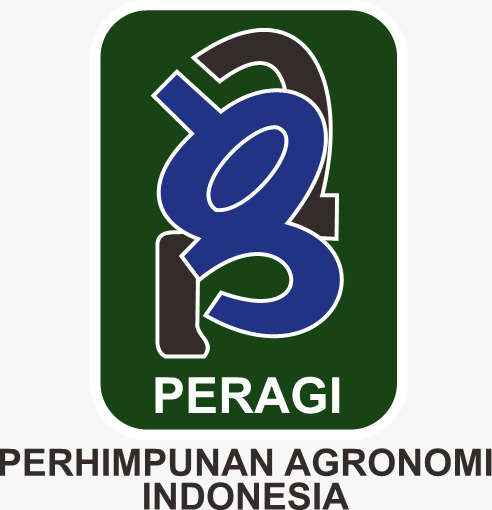Analysis and Identification of Weeds in 3-Month-Old Acacia crassicarpa Stands at PT. Arara Abadi Rasau Kuning District
Abstract
Acacia crassicarpa is a cultivated species in the Industrial Plantation Forest at PT. Arara Abadi, particularly in the Rasau Kuning District. One of the limiting factors for the growth of Acacia crassicarpa stands is weed infestations. At three months of age, weed infestations increased and became uniform across the Acacia crassicarpa stand area. To ensure that weed control measures yield effective and efficient results, it is essential to base these measures on information regarding the types and composition of weeds in the Acacia crassicarpa area. Therefore, this study aimed to analyze and identify the types of weeds found beneath the Acacia crassicarpa, which is three months old. This research method employs purposive sampling to select locations with dense weed populations for use as study plots. The analysis and identification of the weeds revealed nine species, including Goletrak (Borreria alata), which was the most prevalent, with 50 individuals recorded. Other species identified include Bundung (Cyperus odoratus), Wild Acacia, Ruas-ruas, Ramiding (Stenochlaena palustris), Sword Fern (Nephrolepis biserrata), Alang-alang (Imperata cylindrica), and Meniran (Phyllanthus urinaria). The range of the KR values was between 0.5% and 25.3%, while the FR values ranged from 2.4% to 14.6%. The BKR values varied from 0.3% to 18.8%, and the INV values ranged from 3.5% to 56.0%. The highest SDR value for Borreria alata was 18.7%, indicating significant dominance within the weed community. The Shannon-Wiener diversity index (H') was calculated at 1.96, categorizing it as a moderate level of diversity. Simpson's dominance index (D) was measured at 0.15, suggesting a stable level of weed dominance. Additionally, the Margalef species richness analysis (R1) results yielded a value of 1.51, indicating a low level of species richness among the weeds.
Downloads
References
Aini, S. Q., Ifadatin, S., & Zulfa Zakiah. (2022). Karakteristik morfologi pada tumbuhan paku Nephrolepis biserrata (Sw.) Schott dan Nephrolepis exaltata (L.) Schott di kawasan kampus Universitas Tanjungpura. Jurnal Protobiont, 11(1), 11–16. https://doi.org/10.26418/protobiont.v11i1.58226
Ariyanti, M., Yahya, S., Murtilaksono, K., Suwarto, S., & Siregar, H. (2016). Pengaruh tanaman penutup tanah Nephrolepis biserrata dan teras gulud terhadap aliran permukaan dan pertumbuhan kelapa sawit (Elaeis guineensis Jacq.). Kultivasi, 15. https://doi.org/10.24198/kltv.v15i2.11889
Budi, S., Anwar, R., & Rusmini, R. (2020). Analisis biaya pengendalian gulma manual pada tanaman belum menghasilkan (TBM) di PT. Sentosa Kalimantan Jaya. Jurnal Agriment, 5(02), 82–90.
CABI. (2025). Digital Library: Borreria alata, Acacia crassicarpa, Cyperus odoratus dan Nephrolepis biserrata. https://www.cabidigitallibrary.org/
Dari, C., Hardiansyah, H., & Noorhidayati, N. (2023). Keanekaragaman jenis rumput (Genus Cyperus) di kawasan persawahan pasang surut Desa Beringin Kencana Kecamatan Tabunganen. Wahana-Bio: Jurnal Biologi dan Pembelajarannya, 14, 65. https://doi.org/10.20527/wb.v14i2.11687
Dharmawan, A. A., & Wicaksono, K. P. (2019). Pengaruh kepadatan kanopi kayu putih (Eucalyptus pellita) umur 1 dan 1,5 tahun pada komposisi gulma. Jurnal Produksi Tanaman, 7(7), 1339–1346.
Dopchiz, L., & Poggio, L. (2012). Meiosis and pollen grain development in Isolepis cernua f. cernua (Cyperaceae). Caryologia: International Journal of Cytology, Cytosystematics and Cytogenetics, 52, 197–201. https://doi.org/10.1080/00087114.1998.10589173
Gunawan, H., Manurung, S., & Ichsan, M. (2025). Analysis of weed vegetation in oil palm plants (Elaeis guineensis Jacq.) in Bekiun Plantation at PT. Langkat Nusantara Kepong. JURNAL AGRONOMI TANAMAN TROPIKA (JUATIKA), 7. https://doi.org/10.36378/juatika.v7i1.3966
Halimatun, F., Srijayanthi, Aini, N., Hariani, I., Tiara, R., Wandari, W., & Hasanah, B. (2024). Identifikasi Pterydophyta di kawasan Universitas Samudra. Jurnal Biosense, 7(01), 35–49. https://doi.org/10.36526/biosense.v7i01.3541
Imaniasita, V., Liana, T., Krisyetno, K., & Pamungkas, D. (2020). Identifikasi keragaman dan dominansi gulma pada lahan pertanaman kedelai. Agrotechnology Research Journal, 4, 11. https://doi.org/10.20961/agrotechresj.v4i1.36449
Kimhong, H., Ardi, & Chaniago, I. (2025). Potential antioxidant content of three types of mimosa weed from various plant parts using the DDPH (2,2-diphenyl-1-picrylhydrazyl) method. JURNAL AGRONOMI TANAMAN TROPIKA (JUATIKA), 7(1), 157–163.
Kosasih, A. S., & Mindawati, N. (2011). Pengaruh jarak tanam pada pertumbuhan tiga jenis meranti di Hutan Penelitian Haurbentes. Jurnal Penelitian Sosial dan Ekonomi Kehutanan, 5(2), 1–10. https://doi.org/10.20886/jped.2011.5.2.1-10
Kumalasari, N. R., Putra, R., & Abdullah, L. (2020). Evaluasi morfologi, produksi dan kualitas tumbuhan Asystasia gangetica (L.) T. Anderson pada lingkungan yang berbeda: Evaluation of plant morphology, production and quality of Asystasia gangetica (L.) T. Anderson at different environment condition. Jurnal Ilmu Nutrisi dan Teknologi Pakan, 18, 49–53. https://doi.org/10.29244/jintp.18.2.49-53
Kusumaningsih, K., Saputra, S. H., & Muhardi. (2023). Pengendalian gulma paku di areal gambut menggunakan beberapa jenis bahan aktif herbisida. Jurnal Wana Tropika, 12(2), 47–54. https://doi.org/10.55180/jwt.v12i02.313
Listiyanti, R., Indriyani, S., & Ilmiyah, N. (2022). Karakteristik morfologi jenis-jenis paku epifit pada tanaman kelapa sawit di Desa Tegalrejo. Al Kawnu: Science and Local Wisdom Journal, 2. https://doi.org/10.18592/ak.v1i3.7281
Lubis, W., Harahap, W. U., & Nurhajijah, N. (2022). Identifikasi jenis dan nilai Summed Dominance Ratio (SDR) gulma di lahan kering.
Copyright (c) 2025 Ika Lestari, Ervayenri, Arnaldo Saputra, Hanifah Ikhsani, Emy Sadjati

This work is licensed under a Creative Commons Attribution 4.0 International License.
Authors who publish with Jurnal Agronomi Tanaman Tropika (JUATIKA) agree to the following terms:
Authors retain copyright and grant the Jurnal Agronomi Tanaman Tropika (JUATIKA) right of first publication with the work simultaneously licensed under a Creative Commons Attribution License (CC BY 4.0) that allows others to share (copy and redistribute the material in any medium or format) and adapt (remix, transform, and build upon the material for any purpose, even commercially) with an acknowledgment of the work's authorship and initial publication in Jurnal Agronomi Tanaman Tropika (JUATIKA).
Authors are able to enter into separate, additional contractual arrangements for the non-exclusive distribution of the journal's published version of the work (e.g., post it to an institutional repository or publish it in a book), with an acknowledgment of its initial publication in Jurnal Agronomi Tanaman Tropika (JUATIKA). Authors are permitted and encouraged to post their work online (e.g., in institutional repositories or on their website) prior to and during the submission process, as it can lead to productive exchanges, as well as earlier and greater citation of published work.







 More Information
More Information



